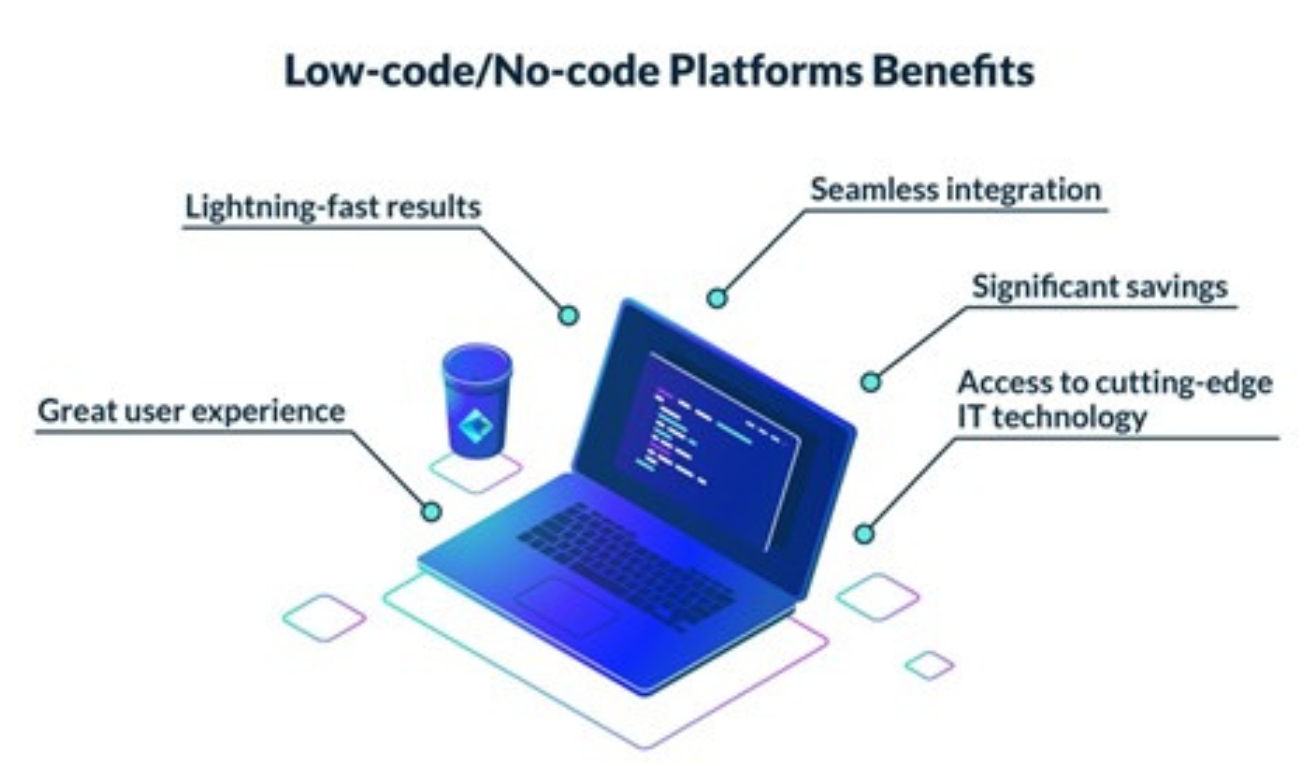- No hidden charges apply

If your company needs to develop an application, you’ll need to go through different stages to build a successful product. These stages start from the requirement analysis and end with a deployment process.

However, the development stage comes with different code related implementations which are technically structured by the developers. Writing codes are generally segregated into two parts as frontend and backend. Frontend developers design the user interface by using frontend codes and backend developers build the business logic into the respective application. Integrating these two segments quite time consuming and development time sometimes stretches beyond control due to changes.
To reduce this build time and develop automated business processes, no-code low-code (LC/NC) platforms are creating a benchmark solution for the software developers as well as business developers. LC/NC platforms are basically associated with simple mechanisms with drag and drop features for development. However, this platform can be accessed by any business person with little coding experience to develop business processes. Developers can use this platform to reduce the build time for application development by using drag and drop functionality.

With a business environment that is becoming increasingly competitive, the need of the hour is rapid deployment of solutions. If speed is essential for your company, the best solution is to use no-code low-code platforms for development. That’s the reason why the IT industry is rapidly adopting no-code low code (LC/NC) platforms for their business processes and application development purposes.
In comparison with traditional or custom application development, no-code low-code (LC/NC) platforms always consume less time and cost consuming. The simple process of code implementation helps to fast-track the development of IT functions.
According to a recent research of Gartner, by 2025 approximately 70% to 80% IT services or enterprises will use the no-code low-code (LC/NC) platforms for their development processes. Apart from that, business users are also getting a chance to utilize different business process ideas or approaches and automate it through no-code low-code platforms.
Your organization’s dgital transformation roadmap implementation also becomes way easier using LC/NC platforms. In fact, as a business user, you can use LC/NC to prioritize your company’s everyday operations to get better business outcomes. However, no-code low-code platforms are at their most powerful in the hands of professional developers.
The architecture behind low-code or no-code platforms is associated with several components like IDE (Integrated Development Environment) as well as different built-in features like:
A low-code platform could also be referred to as a PaaS (Platform as a Service) which is basically a cloud based solution. You will be able to make out from the LC/NC architecture diagram below that there are different workflows and business related rules associated with the tool. The architecture is structured in such a way that drag and drop functionality is easily achieved along with a host of other built-in functionalities.

The advantages of using no-code as well as low-code are mentioned below,

The benefits of low-code no-code platforms are huge but there are also some limitations of LCNC platforms you might want to be aware of:

Today, choosing an efficient low-code no-code platform is the main focus of every IT solutions provider to help you achieve your business and digital transformation goals. Set up a free consultation with our LC/NC experts at AchieveX to discover how this amazing technology can help you save time and costs as well as give you a decent level of control over your applications even without a high level of knowledge in coding.
auctor lectus better best conbia euismot rhoncus dolora gorgeous system.